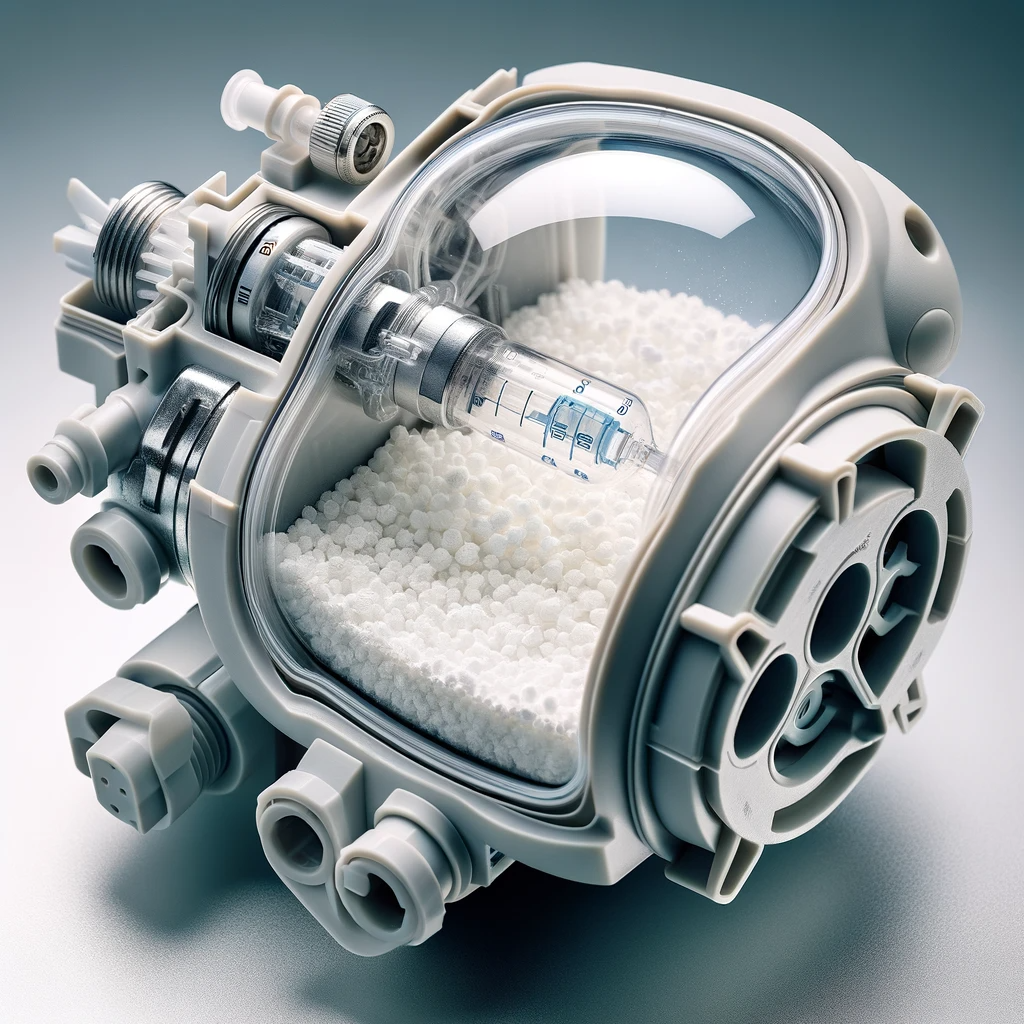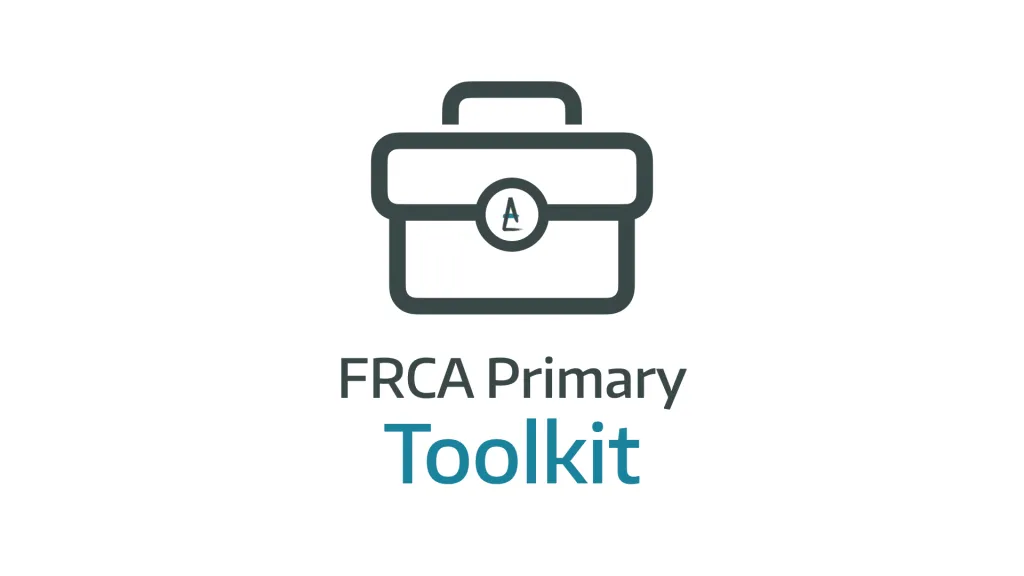Soda Lime and Low Flow

Take home messages
- The key component of soda lime is calcium hydroxide
- The overall reaction is CO2 + Ca(OH)2 → CaCO3 + H2O
- Check which way the colour changes for your equipment
Go with the flow
The only gas your patient really needs to inhale is oxygen, however 100% oxygen is ironically toxic to every organ you own - and falsely reassuring as well - so we tend to blend it down to a more sensible 40% or so with nitrogen in theatre.
Why 100% oxygen is falsely reassuring
If you run your patient on 30% oxygen in theatre, and there is subsequently a problem, such as bronchospasm, obstruction of the tube or accidental extubation, then the patient will start to desaturate fairly soon after, and you'll be alerted to the problem.
- You can then apply 100% oxygen and set about fixing the problem
If, however, you run your patient on 100% oxygen, and a problem occurs - your patient won't desaturate for a long time, so you might not notice for many minutes.
- Then once you do notice, you have no room to manoeuvre, because you were already giving 100% oxygen and now the patient is desaturating and you've got far less time to fix the problem
Stressful times.
This is all well and good through a facemask, but as soon as you employ any sort of tubing for the patient to breathe through, you start introducing dead space to the equation, with the risk of rebreathing expired gas.
If you exhale 1000mls of gas from your lungs into a corrugated anaesthetic hose that has a volume of 1500mls and no fresh gas being forced in the other end, and then inhale again, you're just going to breathe most of that same litre back in again.
Rebreathing expired gas is bad news for two reasons:
- It has much less oxygen
- It has much more carbon dioxide
So we need some sort of fresh gas flow to do two things:
- Replace the used up oxygen
- Wash away the expired CO2
And we can achieve this in one of two ways:
- Blast enough fresh gas into the circuit to blow the exhaled gas out of an exhaust valve (Mapleson Circuits)
- Put one way valves in to ensure the patient inhales from one limb of the circuit and exhales into another (Circle system)
If you fancy a review of the types of breathing systems, check out our post here
High vs Low flow
If we go with the blasty option, then we have to ensure our fresh gas flow is high enough to minimise rebreathing, and this depends on the type of circuit we're using, and how the patient is breathing (spontaneous or mechanical)
- For a Mapleson A circuit and a spontaneously breathing patient, the fresh gas flow needs to match their alveolar ventilation, which is about 70ml/kg/min or 5 litres per minute
- For the same circuit and a mechanically breathing patient, you need at least three times their minute ventilation, so you're now looking at 10 - 15 litres per minute
Now if you consider the fact that this fresh gas flow contains sevoflurane, it's not a very efficient way to anaesthetise someone.
Furthermore, if your APL valve doesn't have some sort of scavenging system attached, then it becomes a very effective way to anaesthetise everyone else in theatre too.
Enter the Circle system
What if we threw in some valves, turned the breathing system into a circle and deliberately got the patient to rebreathe their expired gas?
- They can rebreathe all of the nitrogen as many times as they like (which is most of the volume anyway)
- They can reuse the sevoflurane they've exhaled, rather than setting it free to destroy the ozone layer
- We can add in supplementary oxygen to match their requirements
- We just need to figure out how to remove the CO2
This way, assuming an oyxgen consumption of 250ml/minute, we could top up 250-300ml oxygen per minute into the circuit - along with a tiny bit of sevoflurane to replace the 2% or so that gets metabolised rather than exhaled - and we have ourselves a very efficient low flow anaesthetic with the patient reusing the nitrogen and sevoflurane multiple times.
Soda Lime time
How to remove the CO2?
Chemistry.
Calcium hydroxide will swap the hydroxide group for carbon dioxide to make calcium carbonate.
But that's not the whole story.
This is a rather lethargic reaction if left to its own devices, so to speed things up we throw some sodium hydroxide and potassium hydroxide in as well.
The initial reactions
- CO2 + 2NaOH → Na2CO3 + H2O
- CO2 + 2KOH → K2CO3 + H2O
The subsequent reactions
- K2CO3 + Ca(OH)2 → 2KOH + CaCO3
- Na2CO3 + Ca(OH)2 → 2NaOH + CaCO3
The overall process is exothermic.
Colour change
Clearly the soda lime is going to be consumed in this process and will eventually run out. It would be quite nice to know how much is left in the tank, rather than waiting for the CO2 to randomly start creeping upwards, so we have a colour-changing indicator in the granules to let us know where we stand.
- Phenolphthalein turns from pink to white
- Ethyl violet turns from white to purple
You just need to check which one your soda lime contains.
I asked ChatGPT to create an image of a soda lime canister and this is what it came up with.

It's completely inaccurate but so damn cool.
Any downsides?
By and large soda lime isn't usually going to cause you or your patient any trouble at all, but things you need to be aware of include:
- Carbon monoxide can form when isoflurane or desflurane pass through dry, hot baralyme or soda lime (agents with CHF2 complex)
- Sevoflurane can produce compounds A, B, D, E and G, with a theoretical risk of nephrotoxicity (probably not)
- Soda lime dust damages airways if it gets loose into the breathing circuit
How the circle system works in 60 seconds
@anaestheasier The circle system explained in less than 2 mins#MedEd #FOAMed #TipsForNewDocs #FiY1 #medschool #anaestheasier #anaesthetics #novice #anaesthesia #revision #pharmacology #FRCA #anesthesiologist #anaesthesialife #anesthesialife #odp #studentodp #emergency #crna #student #surgery #or #nurse #theatre
♬ original sound - Anaestheasier
Anaesthesia Tutorial of the Week

References and Further Reading

Primary FRCA Toolkit
Members receive 60% discount off the FRCA Primary Toolkit. If you have previously purchased a toolkit at full price, please email anaestheasier@gmail.com for a retrospective discount.

Discount is applied as 6 months free membership - please don't hesitate to email Anaestheasier@gmail.com if you have any questions!
Just a quick reminder that all information posted on Anaestheasier.com is for educational purposes only, and it does not constitute medical or clinical advice.
